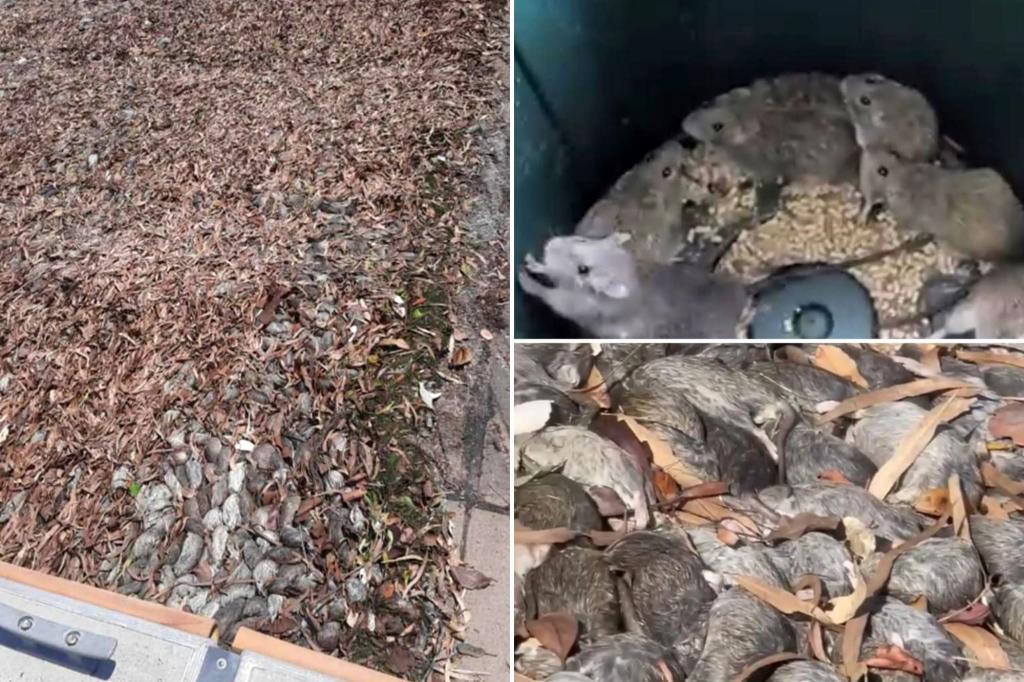Residents are shocked by an epidemic of rats that has descended on the normally picturesque Queensland fishing town, leaving a stench as they die and rot on the beach.
Locals in Karumba, in The Gulf Country between the Top End and the Northern Territory, said the rats appeared a few weeks ago and have since increased in numbers.
Images and videos posted to social media showed what appeared to be thousands of rats, often dead or dying and piled up on beaches, at the edge of boat ramps and on waterfront walkways.
Another disturbing clip, taken at night, shows hundreds of rats floating in the water, bobbing in and out with the tide.
“They are completely out of control,” a Karumba-based commercial fisherman told ABC North Queensland.
“There is a foul smell along the river bed. Last night, with the moonlight, the river really came alive with them.”
Another disturbing clip, this one taken at night, shows hundreds of rats floating in the water, coming in and out with the tide.via News.com.au Locals in Karumba say the rats appeared a few weeks ago and have since increased the number .via News.com.au
Another resident commented: “We saw them dead or alive (but exhausted) in the water and on the beach. (When we returned four days later), they were running on the sand”.
A third resident said there were “millions of rats on the road” outside Cloncurry, about 350km south of Karumba.
“Every rat that dies on the road has three or four more rats eating it. There was about a meter between the dead rats. It’s crazy,” he said.
“You drive between McKinlay and Winton at night and the ground is crawling with rats. They are so thick, they eat themselves after being crushed on the road,” wrote another.
A third resident said there were “millions and millions of rats on the road” outside Cloncurry, about 350km south of Karumba.via News.com.au
It is believed that the rats, which are a native species, swim to a nearby sand island in search of more food but, when they get there, they don’t have the energy to swim back and die before landing back on the beach.
Queensland has been battling what has been described as an epidemic of mice and rats for several months, with the rainy season and abundant harvests creating ideal breeding conditions.
It was this population explosion that forced the rats into the water, because the mainland didn’t have enough food to support them all.
While residents can fight to keep rats out of their homes, there isn’t much that can be done to curb their numbers other than letting nature take its course, says Associate Professor Crowther. via News.com.au
“Most rats eat plants, seeds, they’ll eat insects and they’ll eat everything at an epidemic rate,” University of Sydney ecology professor Mathew Crowther told Yahoo.
“Our animals are adapted because they have these very variable rainfall patterns and the animals at the same time are quite successful, they can react very quickly.”
While residents can fight to keep rats out of their homes, there is little that can be done to curb their numbers other than letting nature take its course, Associate Professor Crowther said.
“They tend to get very high numbers but then they start to crash because they’ve eaten their food source,” he explained.
Categories: Trending
Source: thtrangdai.edu.vn/en/



